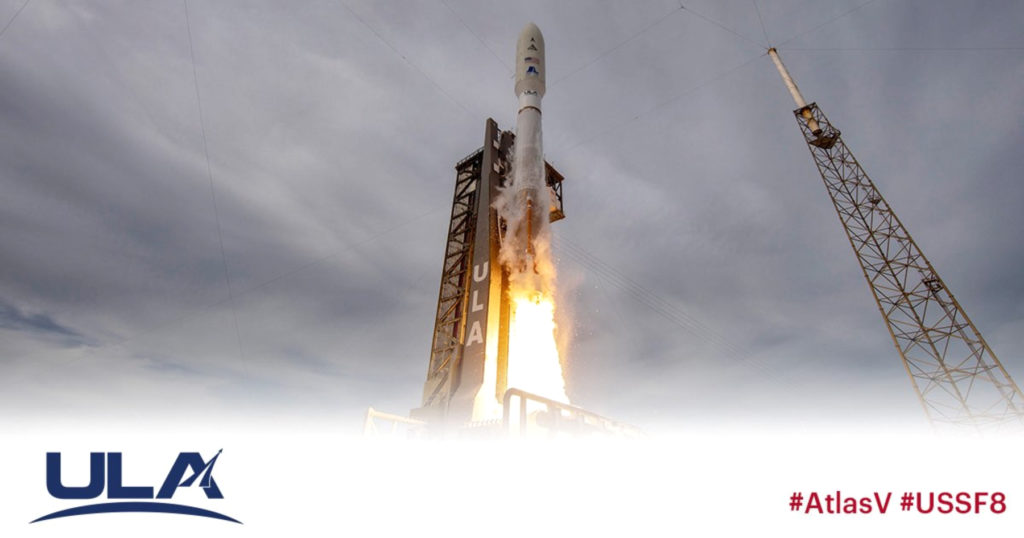
The U.S. Space Force’s Space Systems Command, together with United Launch Alliance and its mission partners, have launched the fifth and sixth Northrop Grumman-built Geosynchronous Space Situational Awareness Program (GSSAP) satellites aboard an Atlas V 551 launch vehicle from Cape Canaveral Space Force Station, Florida on January 21, 2022.

The mission — United States Space Force (USSF)-8 — delivered two satellites, GSSAP-5 and -6, into orbit to further the Space Domain Awareness (SDA) mission.

Four GSSAP satellites are currently on-orbit and are contributing to the SSA architecture of sensors. The Northrop Grumman-built GSSAP satellites provide improved GEO-based space domain awareness (SDA) that will enhance the ability of the Combined Force Space Component Command commander to provide enhanced space safety of flight and better understand the ever evolving state of affairs in the GEO belt. GSSAP-5 and -6 will provide improved SDA data to the National Space Defense Center at Schriever Space Force Base and other national users to enhance the ability to navigate freely and safely within the GEO belt.
"The first four GSSAP satellites have performed remarkably well," said U.S. Space Force Lt. Gen. Stephen N. Whiting, commander of Space Operations Command at Peterson Space Force Base, Colorado. "These next two satellites will add to that capability and enable us to understand more completely things that occur in the geosynchronous orbit. It’s a key piece in the puzzle for space domain awareness."
Operated by the U.S. Space Force, the GSSAP system provides precise GEO based SDA data seven days a week, 24-hours a day.
The satellites join a GSSAP constellation that is supporting U.S. Space Command space surveillance operations (SSA) as a dedicated Space Surveillance Network sensor. GSSAP also supports the Combined Force Space Component Command by collecting space domain awareness data, allowing for more accurate tracking and characterization of man-made orbiting objects.
SSC and its mission partners conducted the mission launch that was aboard ULA’s Atlas V launch vehicle in the “511” configuration (Five-meter fairing, one solid rocket booster and one upper stage engine), procured through the National Security Space Launch (NSSL) program.
The NSSL program provides assured access to space for Department of Defense and other government payloads; and supports the full range of government mission requirements, while delivering on schedule and providing significant cost savings over the heritage launch systems.
Space Systems Command is the U.S. Space Force field command responsible for rapidly identifying, prototyping and fielding resilient space capabilities for joint warfighters. SSC delivers sustainable joint space warfighting capabilities to defend the nation and its allies while disrupting adversaries in the contested space domain. SSC mission areas include launch acquisition and operations; space domain awareness; positioning, navigation and timing; missile warning; satellite communication; and cross-mission ground, command and control and data.
